The late leader of the Catholic Church, Pope Francis, will be laid to rest following Saturday's funeral mass in St. Peter's Square in Rome, Italy. The future of the Church remains uncertain, as its successor is yet to be elected.
Thousands of people are expected to pay tribute to the late pontiff on Saturday 26 April. The mass will be led by the Dean of the College of Cardinals, Cardinal Giovanni Battista Re. The order of service was published by the Vatican ahead of the funeral.
The pontiff died in the early hours of Easter Monday, aged 88. He had suffered a stroke and cardiac arrest, the Vatican announced shortly afterwards. The news came almost a month after Pope Francis was discharged from hospital, where he was being treated for double pneumonia.
The body of the pontiff was moved to St. Peter's Basilica on 23 April. Members of the public were invited to pay their respects to the late Catholic leader before his funeral.
Simple burial
Following the 10:00 funeral 'requiem' mass, the Pope will rest in Rome's Basilica of Santa Maria Maggiore, becoming the first Pope in over a century to be buried outside the Vatican. "I wish that my final earthly journey conclude precisely in this ancient Marian shrine, where I go to pray at the beginning and end of every Apostolic Journey," he wrote, prior to his death, in a statement released by the Vatican.
At the late pontiff's wish, his tomb will be "simple, without particular ornamentation, and bearing only the inscription: Franciscus."
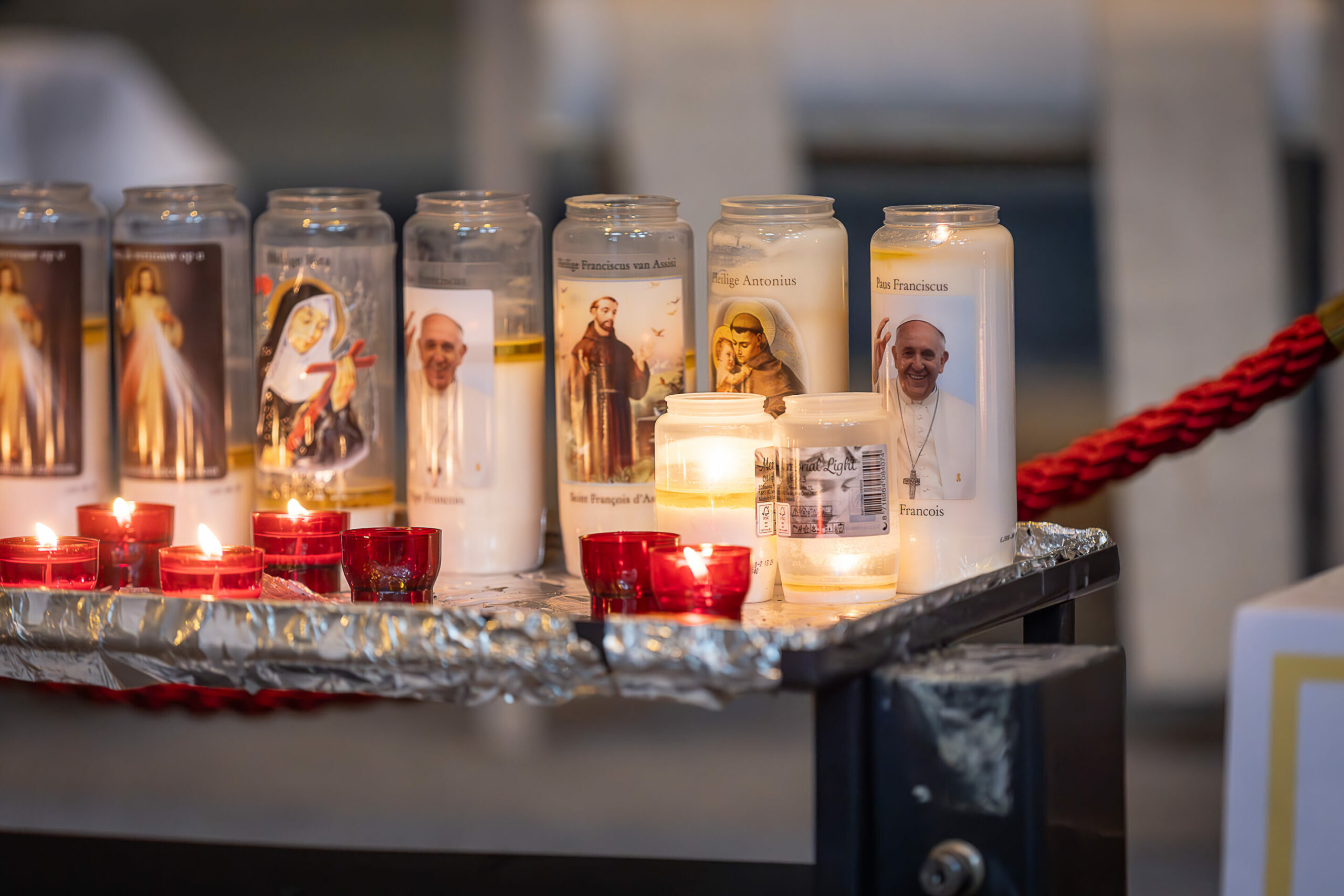
Pope Francis' picture on a candle at a mass in his memory at the Basilica of Koekelberg, in Brussels on 24 April 2025. Credit: Belga/James Arthur Gekiere
The Pope's funeral marks the first day of the 'Novemdiales', an ancient tradition of nine days of mourning and masses in honour of the pontiff. While the celebrations are "open to all", the Vatican has scheduled the involvement of different groups of the Catholic Church for different days, taking into account their relationship with the late Pope.
Among the funeral attendees are several heads of state and world leaders. Belgium's King Philippe and Queen Mathilde will be in attendance, as well as Belgian Prime Minister Bart De Wever (N-VA). European Commission President Ursula von der Leyen and European Council President António Costa are also expected in Rome.
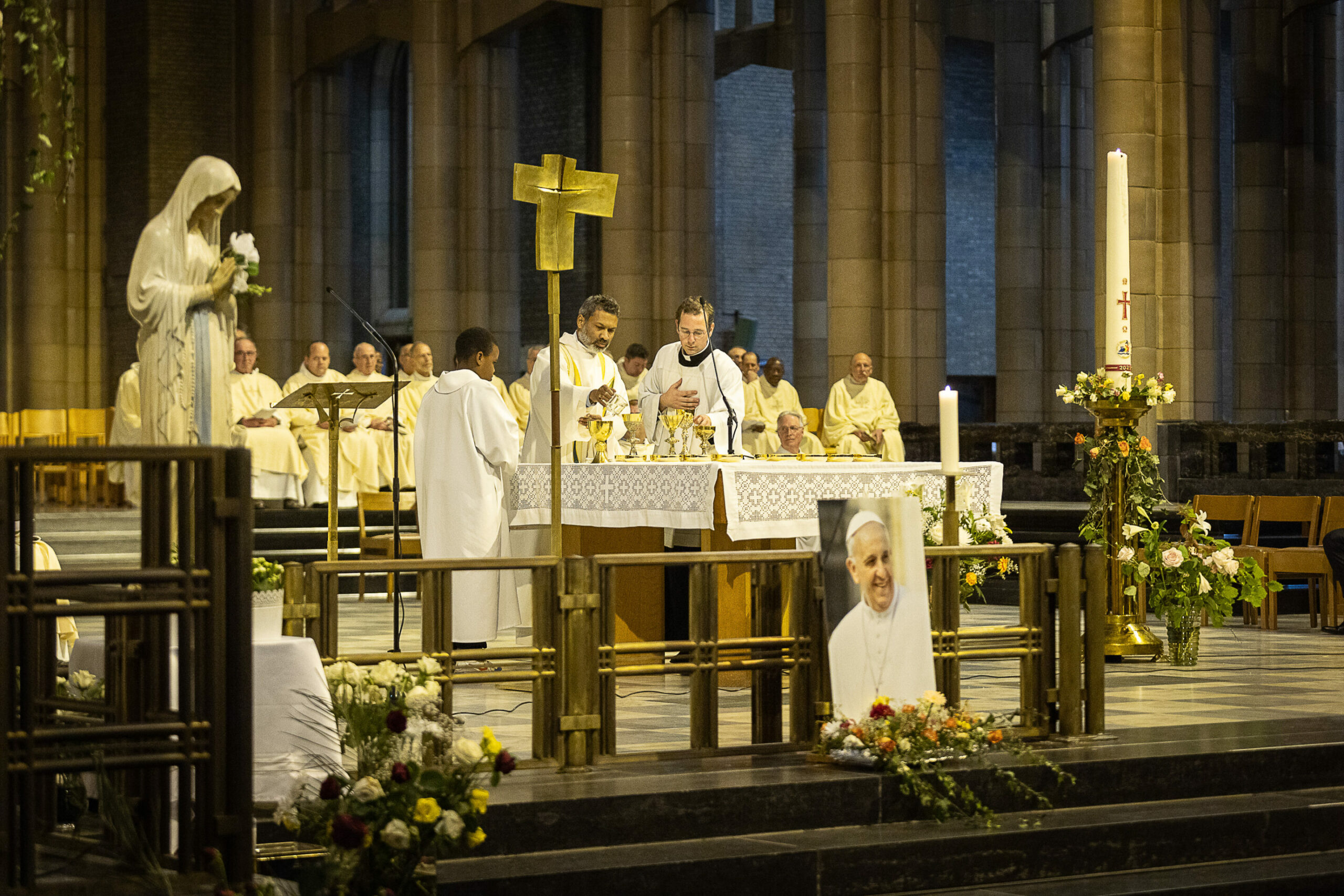
A mass in memory of Pope Francis at the Basilica of Koekelberg in Brussels, Thursday 24 April 2025. Credit: Belga/James Arthur Gekiere
Notably, a group of "poor and needy people" will be present on the steps leading to the Basilica of Santa Maria Maggiore during the funeral. "The poor have a special place in God's heart. So, too, in the heart and Magisterium of the Holy Father, who chose the name Francis so as to never forget them," the Vatican explained.
Complicated legacy
Pope Francis was elected to take over the leadership of the Catholic Church in 2013 after Pope Benedict XVI stepped down. Jorge Mario Bergoglio, later Pope Francis, became both the first Jesuit and South American man to become pope.
As leader of the Church, Pope Francis was widely praised for his more progressive views, as well as his dedication to the poor, refugees, and global crises like climate change. The Pope was commended by some for being more attentive to the LGBTQ+ community, although same-sex marriage is still not allowed within the Catholic Church.
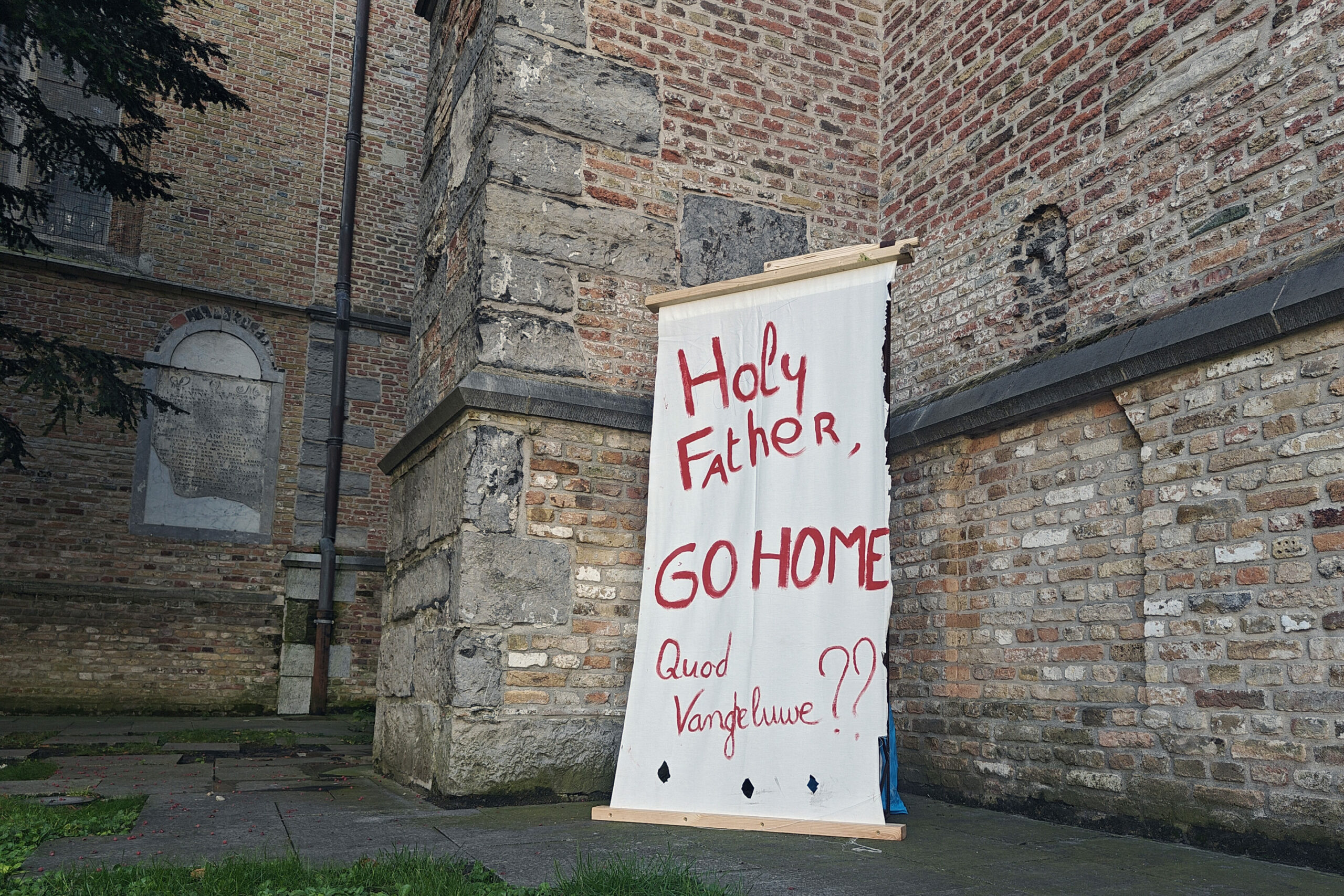
A protest action at the Sint-Salvatorskathedraal cathedral in Bruges, on the occasion of the papal visit to Belgium on Saturday 28 September 2024. Credit: Belga/Maarke Tijssens
Nonetheless, the Pontiff was also the target of criticism, in particular in regard to his conservative view of abortion. During his last visit to Belgium in September 2024, Pope Francis made headlines for calling doctors who perform abortions "hitmen".
Despite being outspoken about sexual abuse in the Church throughout his pontificate, his approach to the issue remained a point of contention for some.
Who comes next?
The death of Pope Francis has prompted the search for the next Catholic leader. The choice can significantly shape the direction the Church will follow in the future.
The election of the future pope is done through a process called a conclave. The process takes place in the Sistine Chapel. It must start no later than 20 days following a pope's resignation or death. It can begin as soon as all cardinals arrive in Rome.
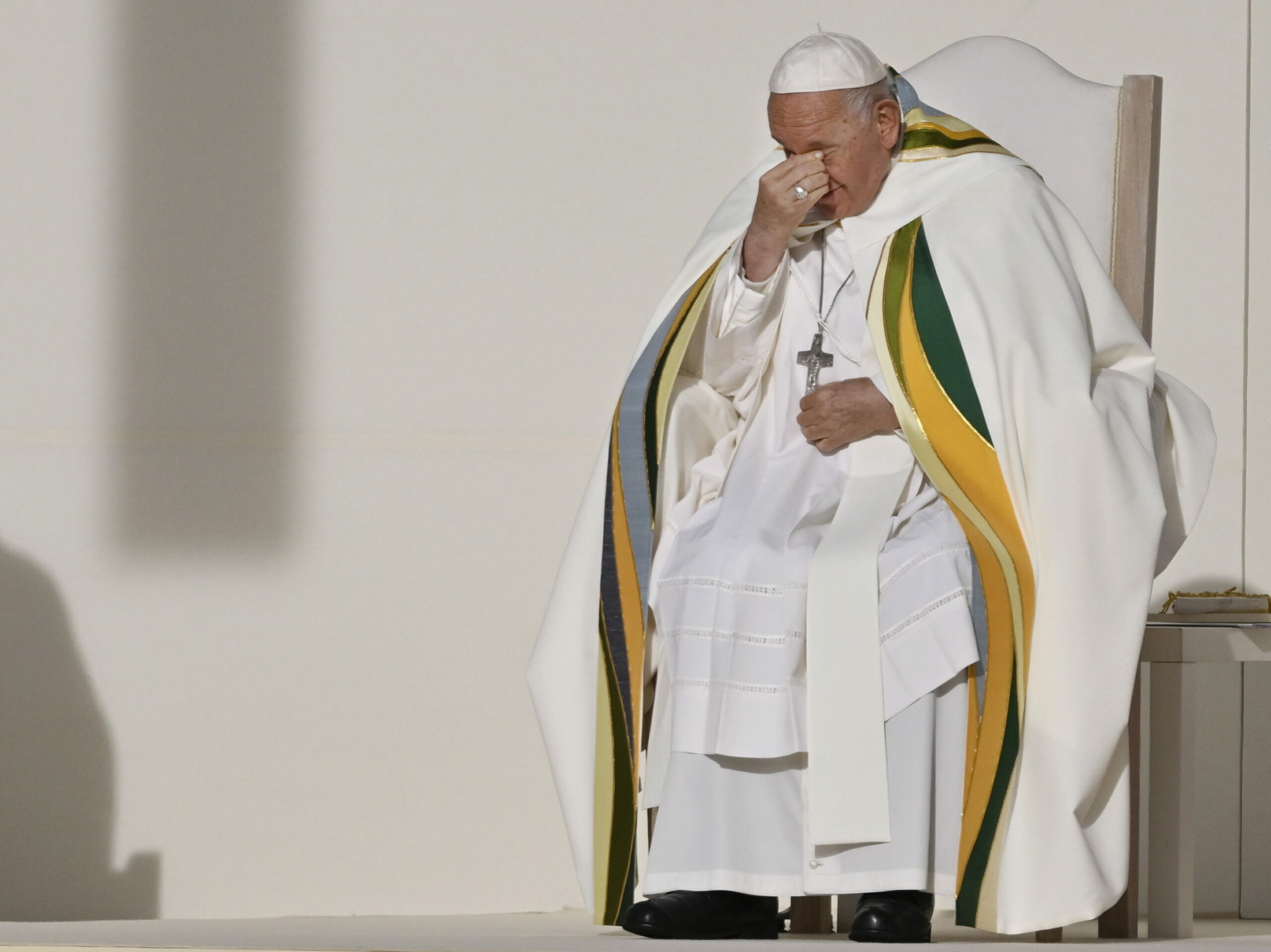
Pope Francis leads a holy mass at the King Baudouin Stadium in Brussels on Sunday 29 September 2024. Credit: Belga/Eric Lalmand
Cardinals must be under 80 years old to be eligible to vote. Four rounds of votes can take place per day. After each round, ballot papers are burned.
The pope is chosen when a candidate has the support of two-thirds of the eligible cardinals. If he accepts the role, a chemical is added to turn the smoke of the burnt ballots white, announcing to those around that a new pope has been elected.
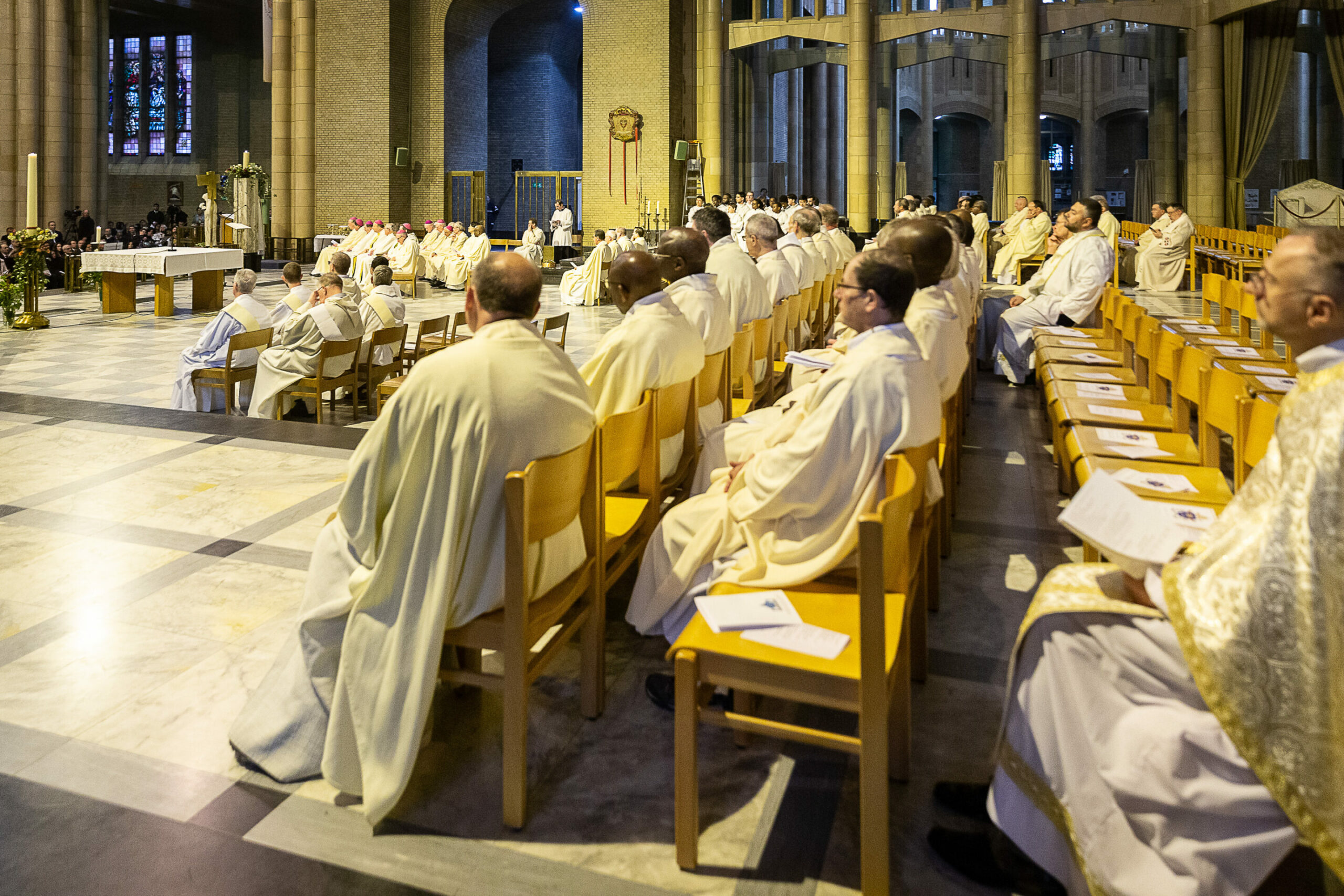
A mass in memory of Pope Francis at the Basilica of Koekelberg, in Brussels, Thursday 24 April 2025. Credit: Belga/James Arthur Gekiere
Several names have been put forward by media outlets as potential favourites to win. Canadian Cardinal Michael Czerny, a Jesuit appointed as cardinal by the late Pope Francis, is a favourite among progressives in the Church, according to the BBC.
Another possible front-runner is the Italian Pietro Parolin, who was the Vatican's Secretary of State during Pope Francis' pontificate. Parolin was notably critical of the legalisation of same-sex marriage.
Among the list of potential pontiffs is also the Filipino Luis Antonio Gokim Tagle, who was a favourite for the papacy in 2013. Similarly to Pope Francis, Tagle is dedicated to social issues and migrants, but critical of abortion rights.
Regardless, the future of the Church remains unknown until there are signs of white smoke. Will it continue down a path of gradual progress or return to its more conservative roots?

